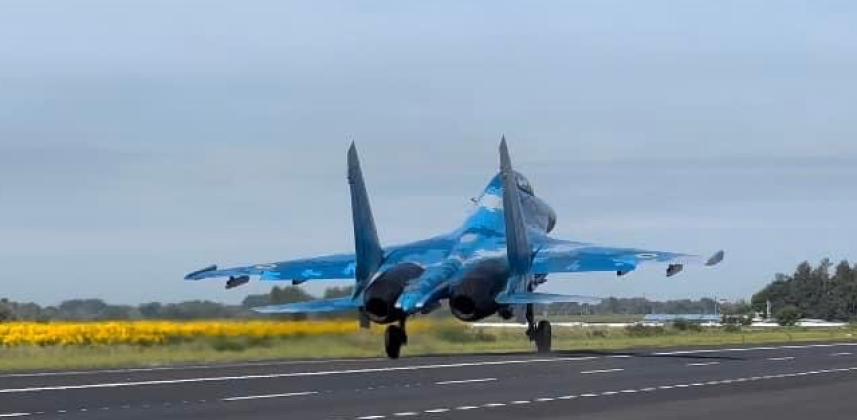News
First F-16s Donated to Ukraine: U.S. Air Force General Warns a Potent Fleet Won’t Be Ready Before 2027
On August 20 the Netherlands and Denmark announced that they would donate up to 61 F-16 fighters to Ukraine after the completion of pilot training, with Danish Prime Minister Mette Frederiksen confirming her country would provide 19 aircraft. These would “hopefully” include six around new year, eight more in 2024, and the remaining five in 2025, which she said were a sign of Denmark’s “unwavering support for your country’s fight for freedom.” Dutch Prime Minister Mark Rutte said the Netherlands had 42 F-16s its fleet, but did not specify a number to be donated or a timeline for doing so. “Today we can announce that the Netherlands and Denmark commit to the transfer of F-16 aircraft to Ukraine and the Ukrainian air force,” Rutte stated in a joint press conference with Ukrainian President Volodymyr Zelensky, stating that the aircraft would be handed over from Danish stockpiles once “the conditions for such a transfer have been met.” Both Denmark and the Netherlands were among the first clients for the F-16 around 40 years ago during the Cold War, and are currently phasing the aircraft out of service and integrating its direct successor the F-35A into service as partners in the F-35 program.

Although F-16 deliveries are set to begin in 2024, a viable force capable of major operations is not expected to be formed before 2027 according to the latest assessments by U.S. Air Force General James Hecker, who heads U.S. Air Forces in Europe (USAFE), NATO’s Allied Air Command, and U.S. Air Forces Africa (AFAFRICA). With Ukrainian pilots currently undergoing language training in Britain, Hecker observed regarding their state: “They’re young pilots that barely have any hours at all. So they’re not currently fighting the war… And then they’re going to get a little bit more training on propellers, and then go down to France and fly in the [Dornier Alpha Jets] for a little bit, that all is going to take time… And that’s probably not going to happen before the end of the year. So that takes a while to make that happen. So that’s why it’s going to be at least until next year until you see F-16s in Ukraine.” Ukraine is unlikely to have enough pilots able to fly F-16s in combat at anywhere near their potential before 2027, he observed, stating: “You can get proficient on some weapons systems fairly quickly. It takes a while to build a couple of squadrons of F-16s and to get their readiness high enough and their proficiency high enough. This could be four or five years down the road.”

The United States has been much more hesitant than many of its European allies regarding F-16 transfers to Ukraine, with the Cold War era jets still playing a vital role in the U.S. Air Force and being marketed for export meaning the repetitional damage from major losses in Ukraine would be a highly unwelcome development. The F-16’s lack of stealth capabilities and much lower manoeuvrability means the aircraft are expected to be at least as vulnerable as MiG-29 and Su-27 fighters Ukraine currently flies, but without the benefits of of being able to operate from makeshift airfields as Soviet jets were built to do. While modern F-16 variants such as the F-16 Block 70/72 would be a potential game changer for the air war with tier advanced AESA radars and AIM-120D missiles, the older Cold War era F-16 variants with obsolete mechanically scanned array radars that have been donated will not introduce any fundamentally new capabilities. The Block 70/72 models are being produced very slowly and marketed for around $124 million each with accompanying armaments and parts, meaning transfers of these aircraft to Ukraine is far from viable. With NATO having exhausted its supplies of MiG-29s from former Warsaw Pact states, however, and with Ukraine’s ground based air defence network being increasingly depleted, supplying old F-16s represents one of the few ways to delay Russia’s seemingly inevitable obtaining of air superiority. The fighters are expected to carry many of the same armaments currently carried by Ukraine’s Soviet built jets such as European Storm Shadow and SCALP cruise missiles and American AGM-88 HARM anti radiation cruise missiles.












